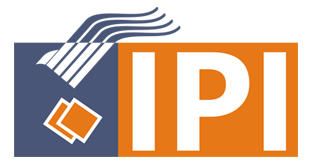Implementasi Teknologi Informasi dan Komunikasi New Media Digital sebagai Konsep Model Pembelajaran Siswa di SMPN 101 Jakarta
(1)
(*) Corresponding Author
Abstract
After the Covid-19 pandemic, various parts of the world began to pursue and experience improvements in the world of education, the learning concept that provides various facilities makes students look for something that makes it easy and understandable for the material conveyed by the teacher in the learning model. Digital Information and Communication Technology New Media offers a very interesting learning concept among students, new application platforms have sprung up to facilitate learning such as mentorship, Quizizz, profs and others. The purpose of this study is to see and know the concept of a learning model that can be easily understood by students at SMPN 101 Jakarta. As is known, in the last two years students have been presented with a learning model that makes students understand without being able to understand the concept of the learning model as a whole. The method used was quantitative with a comparative causal approach using a field survey with 94 students at SMPN 101 Jakarta. Testing the truth of the hypothesis of 94 student respondents at SMPN 101 Jakarta with a simple linear regression analysis. The results obtained can be seen based on research data that new digital media has a great influence on the concept of learning models 71.3% and 63.8% of the concept of learning models with the help of digital media. It can be seen that new digital media information and communication technology is very helpful in determining the concept of student learning models at SMPN 101 Jakarta.
Keywords
Full Text:
PDF (Indonesian)References
E. Handayani, p. P. Sari, and m. J. Islami, “pemanfaatan teknologi informasi dan komunikasi (tik) oleh umkm pada masa pandemi covid-19,” j. Komunika j. Komunikasi, media dan inform., vol. 10, no. 2, 2021, doi: 10.31504/komunika.v10i2.4622.
H. Herlinda, h. Fitria, and y. Puspita, “implementasi teknologi informasi dan komunikasi dalam proses pembelajaran kurikulum 2013,” j. Educ. Res., vol. 1, no. 2, 2020, doi: 10.37985/joe.v1i2.11.
A. Alfandya and f. Wahid, “peran modal sosial dalam keberhasilan inisiatif teknologi informasi dan komunikasi untuk pembangunan,” jipi (jurnal ilm. Penelit. Dan pembelajaran inform., vol. 5, no. 1, 2020, doi: 10.29100/jipi.v5i1.1566.
S. A. Hapsari and h. Pamungkas, “Pemanfaatan google classroom sebagai media pembelajaran online di universitas dian nuswantoro [the use of google classroom as an online learning media at universitas dian nuswantoro],” wacana j. Ilm. Ilmu komun., vol. 18, no. 2, 2019.
F. Andayani, “Implementasi link & match melalui pembelajaran berbasis proyek bersama pt. Pesona khatulistiwa nusantara di smk negeri 1 tanjung palas,” Acad. J. Inov. Ris. Akad., vol. 1, no. 1, 2021, doi: 10.51878/academia.v1i1.485.
Andri and Suyanto, “Sistem Informasi Penentuan Guru Terbaik Berbasis Kinerja pada Pondok Pesantren Qodratullah,” Digit. Zo. J. Teknol. Inf. dan Komun., vol. 11, no. 1, 2020, doi: 10.31849/digitalzone.v11i1.3865.
A. Apriyansa, R. Rusmono, and M. Yusro, “Desain Media Informasi Program Studi Pada Sekolah Menengah Kejuruan (SMK),” Digit. Zo. J. Teknol. Inf. dan Komun., vol. 9, no. 1, 2018, doi: 10.31849/digitalzone.v9i1.995.
U. Paramadina, “Idham Imarshan,” Des, vol. 5, no. 2, 2021.
L. Gourlay, M. Hamilton, and M. R. Lea, “Textual practices in the new media digital landscape: Messing with digital literacies,” Res. Learn. Technol., vol. 21, 2013, doi: 10.3402/rlt.v21.21438.
R. W. D. . & R. N. Paramita, “Metode Penelitian Kuantitatif Buku ajar Perkuliahan Metodologi Penelitian Bagi Mahasiswa,” 2018.
E. Jehadus, M. Tamur, S. Jelatu, K. V. Pantaleon, F. Nendi, and S. S. Defrino, “The influence of conceptual understanding procedures (cups) learning models concept of understanding of concept student math,” J. Educ. Expert., vol. 3, no. 2, 2020, doi: 10.30740/jee.v3i2p53-59.
DOI: http://dx.doi.org/10.30998/sap.v7i3.16023
Refbacks
- There are currently no refbacks.
Copyright (c) 2023 Rayung Wulan

This work is licensed under a Creative Commons Attribution-NonCommercial-NoDerivatives 4.0 International License.
SAP (Susunan Artikel Pendidikan) indexed by:






Ciptaan disebarluaskan di bawah Lisensi Creative Commons Atribusi 4.0 Internasional.
View My Statis



 Accredited Certificate
Accredited Certificate
 Tamplate Journal
Tamplate Journal




















